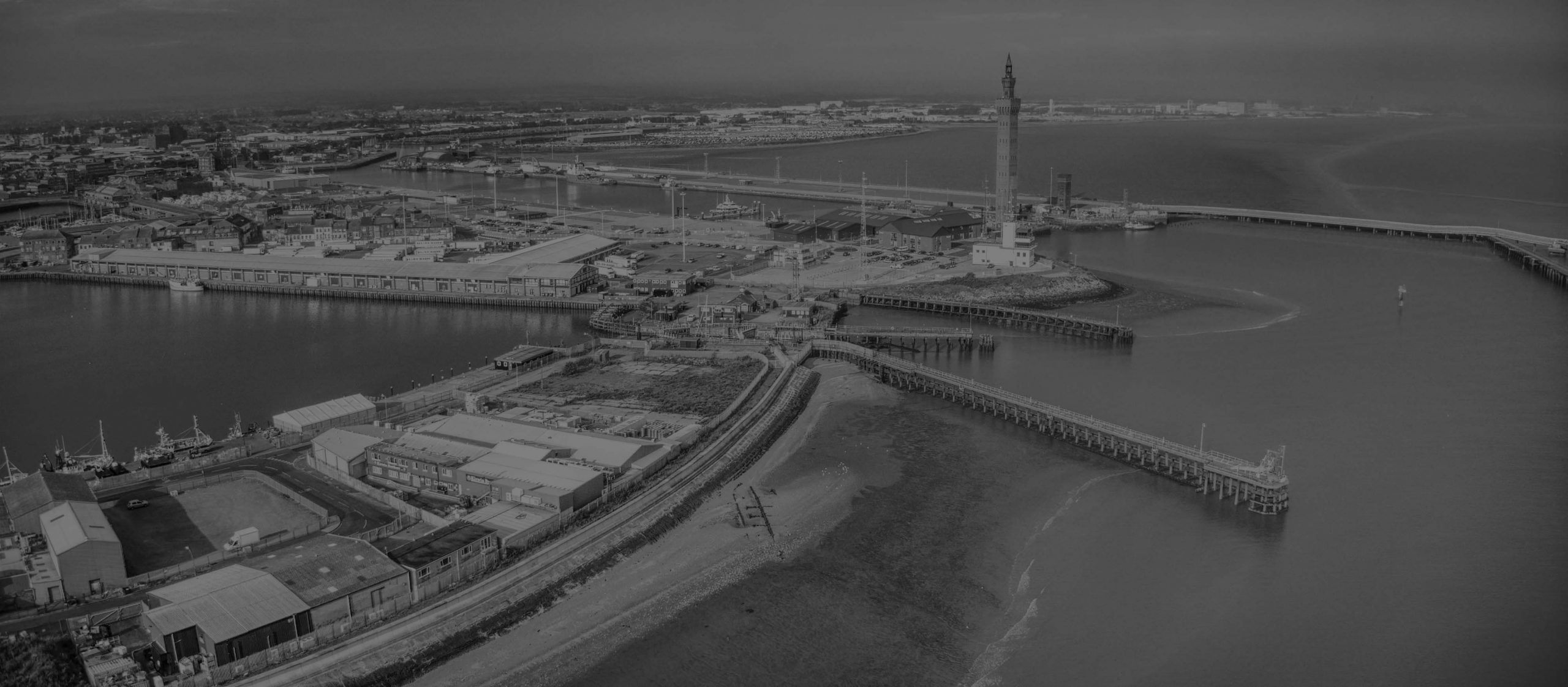
Grimsby’s fishing heritage
From its origins as a thriving medieval fishing village, Grimsby’s location on the Humber Estuary made it a natural centre for trade and seafaring. Since the days of the Danes in the ninth century, the town has grown into a powerhouse of the British seafood industry – at one point boasting the largest fishing fleet in the world.
That legacy lives on today, with Grimsby now a leading hub for seafood processing, cold storage, and distribution — and Meatex is proud to be a part of it.


While the Danish fisherman Grim may have given Grimsby its name, along with a few legendary tales; it was the arrival of the railways in the mid-19th century that truly changed the town’s fortunes. The new link to London’s busy fish markets transformed Grimsby from a quiet coastal town into a national hub of fishing excellence.
Over the next century, this once sleepy corner of Lincolnshire evolved into one of the UK’s most important fishing ports, serving both domestic and international markets. The construction of three fish docks, a bustling fish market, smokehouses, and what became the largest ice factory in the world helped cement Grimsby’s status.
By the early 20th century, Grimsby was not only the world’s biggest fishing port, but also responsible for producing one fifth of all fish consumed in the UK.

By the 1950s, Grimsby was a vibrant fishing hub with a hungry workforce and hundreds of trawlers lining the docks. The bustling and noisy narrow streets of the nearby Kasbah area were home to dozens of smokehouses and warehouses, along with fisherman, tradesmen, dockers, shop keepers, and market stallholders alike. The unique Grimsby fish processing and smoking skills developed by local artisans during this time have been passed down through the generations and still have a stellar reputation today.
For the fishermen away at sea in freezing waters for three weeks at a time, deep sea fishing was a remarkable but dangerous way of life, and it was equally difficult for the families left behind. Great fortunes were made as well as lost when the so-called “three-day millionaire” fishermen returned to port, their profits burning a hole in their pockets as they spent the fruits of their labour in the local bars before returning to sea.

Today, Grimsby is a global leader in seafood innovation and sustainability, attracting international investment and exporting high-quality fish products around the world. It’s home to one of Europe’s most important fish auction markets, with fresh catches arriving daily, not just from local waters, but from further afield, including Scotland, Norway, and Iceland.
Grimsby’s fishing heritage still runs deep in the community. Generations of families remain closely connected to the trade, and pride in the town’s maritime past is easy to spot, from the regeneration of the Kasbah into a hub for artisan food producers, to the loyal fans of Grimsby Town FC, affectionately known as the Mariners, and the award-winning Grimsby Fishing Heritage Centre, an Arts Council England Accredited Museum.
Remarkably, around 70% of the UK’s seafood is still processed in Grimsby, and its fish products can be found on the menus of Michelin-starred restaurants and in the kitchens of fish lovers across the country.

Grimsby: Proud Home of British Seafood
Grimsby has been at the heart of the UK’s seafood industry for over a century. Once the largest fishing port in the world, the town has evolved into a modern seafood hub — home to a wide range of processors, traders, and cold storage facilities that continue to serve customers across the UK and internationally.
Meatex is proud to be part of that legacy. Our factory is located just a stone’s throw from Grimsby Docks, right in the centre of the town’s historic fish trade district. That means faster access to key suppliers, transport links, and cold storage – all backed by generations of local know-how.

